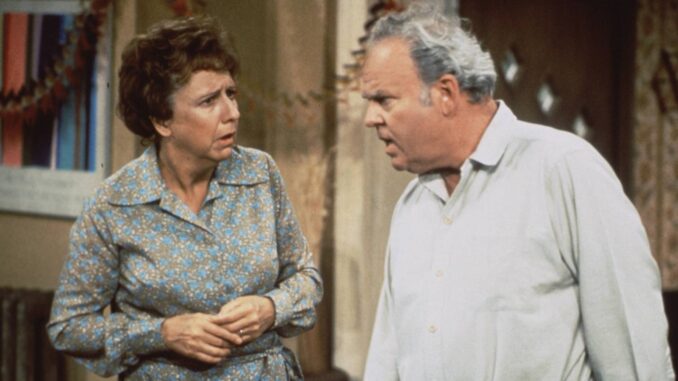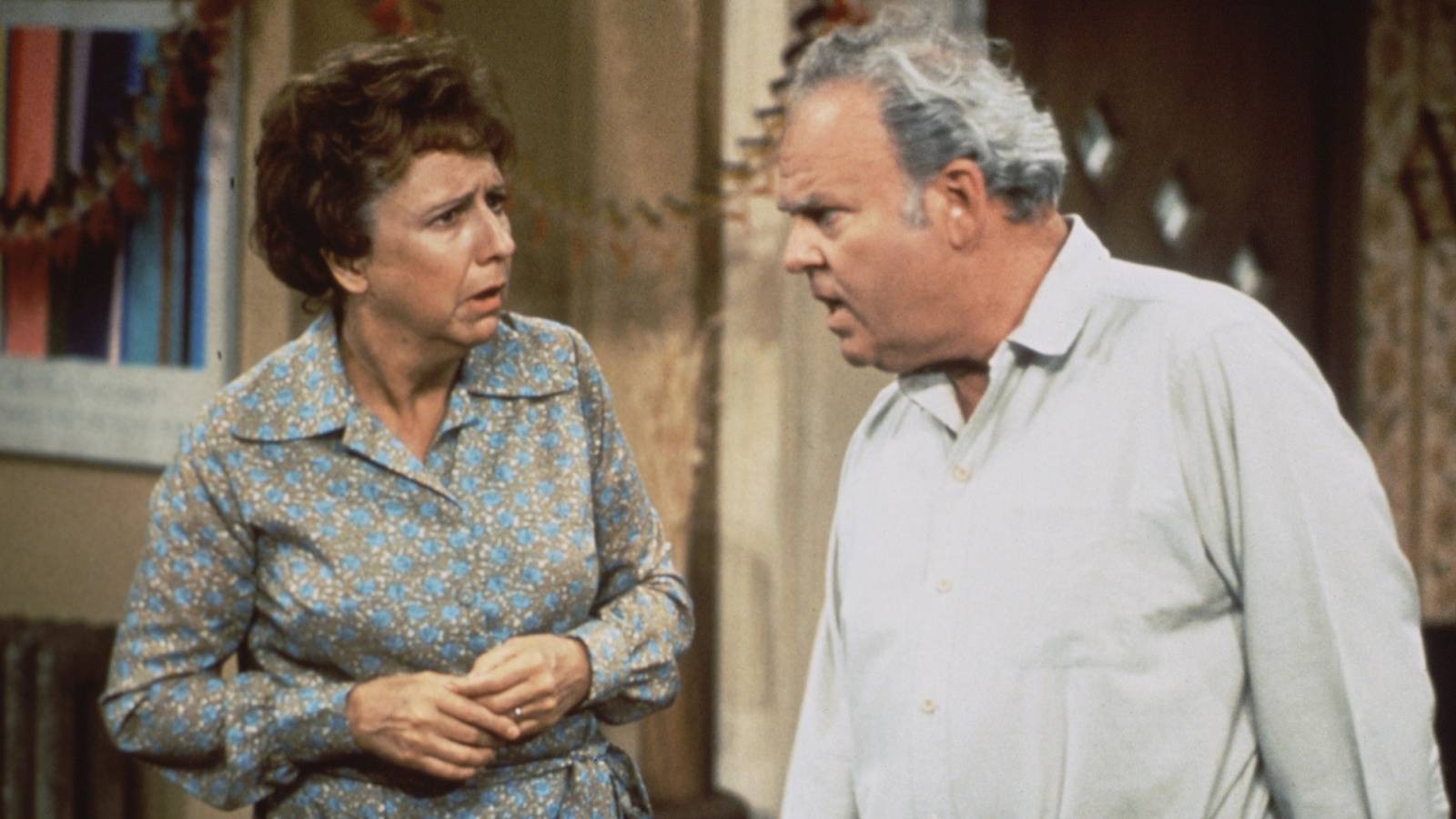
When “All in the Family” hit the airwaves in 1971, television would never be the same. The show wasn’t just a sitcom — it was a cultural earthquake that reshaped how Americans laughed, argued, and thought about each other. Created by Norman Lear and starring Carroll O’Connor, Jean Stapleton, Sally Struthers, and Rob Reiner, this groundbreaking series pushed every boundary imaginable.
Whether you’re a lifelong fan or a curious newcomer, these 16 cutting-edge facts reveal the genius, controversy, and legacy behind one of TV’s most daring comedies.
1. The Show Was Based on a British Sitcom
Before Archie Bunker ever yelled “Stifle yourself, Edith!”, he had a British counterpart named Alf Garnett. The show “All in the Family” was adapted from the UK hit “Till Death Us Do Part.”
Norman Lear saw potential in bringing that same raw, unfiltered humor to an American audience — and the rest is history.
2. Archie Bunker Almost Had a Different Name
Imagine calling him Archie Justice. That was the original name in early drafts before Lear decided “Bunker” sounded better — symbolic of Archie’s stubborn, impenetrable worldview. The name captured his nature perfectly: defensive, entrenched, and unyielding.
3. CBS Almost Refused to Air It
Executives at CBS were terrified. The pilot was filled with language and topics never before heard on primetime TV — racism, sexism, politics, and religion. It was so controversial that two networks (ABC and NBC) had already rejected it.
CBS finally agreed to air it — but only after Lear promised to stand by every word. Good thing they did.
4. The First Episode Came With a Viewer Warning
When “All in the Family” premiered on January 12, 1971, CBS aired a disclaimer before the show started. It warned viewers that the content “intended to throw a humorous spotlight on our frailties.”
It was television’s first true content warning — decades before they became common.
5. The Theme Song Was Sung by the Stars Themselves
That nostalgic tune — “Those Were the Days” — wasn’t performed by professional singers. Carroll O’Connor and Jean Stapleton sang it themselves, live, in every episode opening.
Their imperfect, slightly off-key voices gave the theme a genuine charm that fans still adore.
6. The Set Was Shockingly Small

The Bunkers’ living room was tiny — and it felt even smaller with the live studio audience squeezed in. The show’s creators wanted it that way to keep the focus on the family dynamic.
It mirrored working-class life: cozy, crowded, and full of noise — just like Archie’s arguments.
7. The Toilet Flush Was a TV First
Yes, you read that right. “All in the Family” was the first network television show to feature the sound of a toilet flushing on air.
It might sound trivial now, but in 1971 it was scandalous. It symbolized the show’s mission — to break taboos and normalize everyday life on TV.
8. Archie and Edith’s Chairs Are in the Smithsonian
Those two iconic living room chairs — Archie’s worn armchair and Edith’s modest seat beside him — are now preserved in the Smithsonian National Museum of American History in Washington, D.C.
They sit alongside other national treasures, proving that sometimes a TV set can become a piece of history.
9. Carroll O’Connor Almost Quit the Show
O’Connor often clashed with producers about Archie’s portrayal. He feared audiences would idolize Archie instead of understanding him as a flawed man.
At one point, he walked off set — only to return after Norman Lear reassured him the show’s message would stay intact. Their creative tension became part of what made the show so real.
10. “All in the Family” Changed American Vocabulary
The show introduced phrases that became part of everyday speech. Terms like “Meathead,” “Dingbat,” and “Stifle!” became cultural catchphrases overnight.
People weren’t just watching “All in the Family” — they were quoting it at work, at school, and around their own dinner tables.
11. It Was the First Sitcom to Show a Married Couple in Bed Together
In the 1970s, TV standards were strict — even for married couples. But Archie and Edith were shown sharing the same bed, marking another small but revolutionary TV moment.
It’s one of those subtle details that showed “All in the Family” wasn’t afraid to keep things real.
12. Norman Lear Wanted Every Episode to Spark Discussion
Lear’s philosophy was simple: “If you’re not talking about it after the show ends, it didn’t work.”
Each episode tackled subjects that families usually avoided at the dinner table — like racism, war, sexuality, and politics — forcing America to have uncomfortable but necessary conversations.
13. It Launched Multiple Spinoffs
The Bunker universe didn’t end with “All in the Family.” It spawned five spinoffs:
-
Maude
-
The Jeffersons
-
Good Times
-
Archie Bunker’s Place
-
Gloria
Each show carried on Lear’s legacy of mixing laughter with social commentary — proving that one family’s chaos could spark an entire TV dynasty.
14. The Show Won 22 Emmy Awards
Across its nine-season run, “All in the Family” became a critical powerhouse, winning 22 Emmy Awards, including four consecutive wins for Outstanding Comedy Series.
Carroll O’Connor and Jean Stapleton each took home multiple acting awards, cementing their place among TV’s greatest performers.
15. The Series Finale Was an Emotional Goodbye
When the final episode aired in 1979, millions tuned in to say goodbye to the Bunkers. The show had evolved, reflecting the changing American landscape.
Archie had softened, Edith had grown stronger, and the audience had learned — perhaps reluctantly — that people could change too.
16. Its Legacy Still Shapes Modern TV
Without “All in the Family,” shows like “The Office,” “Family Guy,” “Roseanne,” and “Modern Family” might never have existed.
It redefined what sitcoms could be — not just funny, but fearless. Its influence can still be seen in every series that dares to tackle real-world issues with humor and heart.
The Genius Behind the Controversy
Why It Worked
Lear’s magic formula was simple yet radical: let characters express their flaws honestly. Archie wasn’t meant to be a hero or a villain — he was human. That’s why audiences kept watching. They recognized him in their fathers, neighbors, and sometimes, themselves.
Controversy = Conversation
“All in the Family” didn’t shy away from hot topics. It leaned into them — and by doing so, turned laughter into learning. Its controversies weren’t accidents; they were catalysts.
From Sitcom to Social Statement
“All in the Family” blurred the line between entertainment and education. Viewers laughed, but they also reflected on their own beliefs. That was the real genius of the show — it held up a mirror and dared America to look.
Conclusion
“All in the Family” wasn’t just a sitcom — it was a cultural revolution wrapped in laughter. It broke barriers, sparked debates, and proved that television could be both meaningful and hilarious.
From Archie Bunker’s stubborn rants to Edith’s gentle wisdom, every moment carried a message that still resonates today: the world changes, but humanity’s flaws — and potential for growth — remain timeless.
Even after more than five decades, its influence echoes across generations, reminding us that great storytelling doesn’t just entertain — it transforms.
